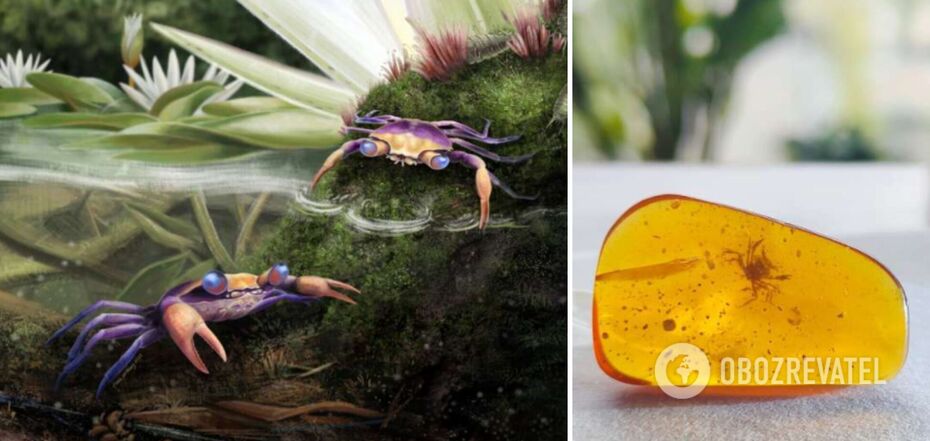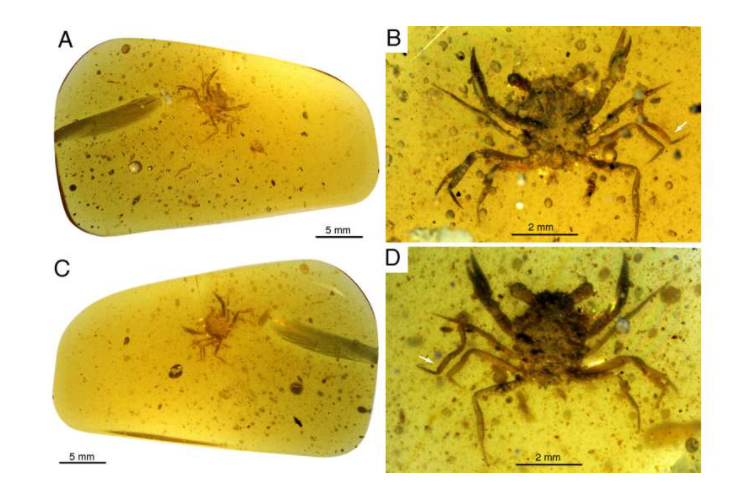Life
Scientists have found a prehistoric crab that got stuck in amber 100 million years ago. Photos and video
Scientists have discovered a tiny crab called C. athanata (which translates to "immortal spirit of clouds and waters") that got stuck in tree resin and was buried alive 100 million years ago. This species of crab is the oldest preserved in amber.
According to Popular Science, the crustacean's body is perfectly preserved, including eyes, shell, claws, and even tiny gills. Scientists called the discovery exciting because this crab lived on Earth during the time of the dinosaurs and "is a missing link in the evolution of the selves" (to see photos and video, scroll to the bottom of the page).
The researchers examined the fossil under a microscope, using microcomputer scanning to create three-dimensional digital reconstructions of the crab's body. They found that C. athanata was a semi-terrestrial animal that migrated to land from the water. It was small, with bulging eyes, antennae, and six pairs of gills. Its shell was 2 mm wide and its leg span was 5 mm.
Scientists assume that the crab was alive when it suffered a sad fate and ended up in the wood resin because it was "extremely well preserved."
"The earliest crabs differed from modern crabs in many ways, and their appearance was a cross between lobsters and crabs," the scientists added.
At the same time, they noted that the Naida has a lot in common with their modern species, including the structure of the shell and legs.
"This means that the usual structure of the crab's body was formed in the middle of the Cretaceous period, when many ancestors of modern crabs appeared," the experts said.
Scientists also believe that it lived in shallow reservoirs on the forest floor or even in wet tree hollows.
"It is quite difficult to determine the lifestyle of C. athanata from a single specimen that got into amber. However, C. athanata fills a gap in understanding how crabs began to get out of the water and onto the land," the scientists emphasized.
As reported by OBOZREVATEL, a skeleton of an unknown prehistoric creature was spotted on Google Earth.






























